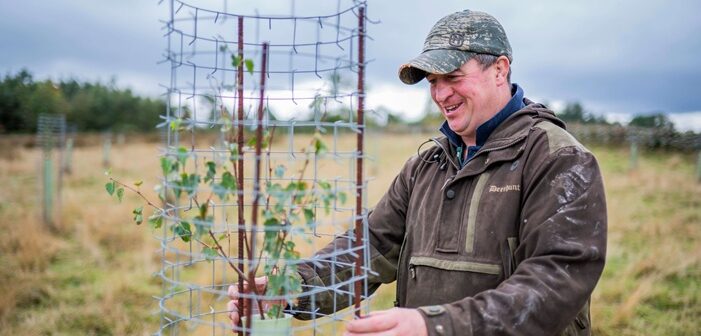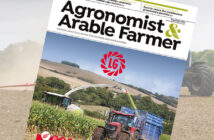Lloyds Bank has launched its Farming with Nature: Mapping the Growth Opportunity for UK Agriculture report, claiming it is the most comprehensive analysis of its kind.
It has mapped 5.1 million hectares, almost a third of the UK’s farmed land, using geospatial data, on-farm assessments and new economic insight.
The report also marks the introduction of Lloyds’ Agricultural Transition Finance, a new product launching later this year, designed to support farmers transitioning to more sustainable and regenerative systems.
Managing mounting risks from climate change and biodiversity loss
The report identifies 1.2 million hectares of UK farmland with the highest potential for habitat creation that can act as carbon stores and boost beneficial species. In addition, a further 600,000 hectares is suitable for tree and hedge planting, to help farms reduce flood risk and soil erosion, while improving water retention and biodiversity.
With drought now 70 times more likely due to climate change, the bank’s analysis shows 700,000 hectares in drought-prone regions that could benefit from improved water management.
These above-ground insights are already delivering tangible benefits for farming businesses on the ground. The report identifies a 400 ha arable enterprise in Warwickshire which could save up to £61,000 annually by adopting practices such as cover cropping, more diverse rotations and legume fallows. A 154 ha mixed farm in Shropshire has saved £30,000 through switching to a fully grass-based regenerative cattle system.
Andrew Walton, chief sustainability officer at Lloyds says: “This report marks a major step forward in understanding how farming and nature interact across the UK. Our latest insights show how targeted support can strengthen farming businesses and help restore ecosystems. As the UK’s largest agricultural finance provider, we’re committed to supporting individual farming businesses that sit at the heart of the UK’s rural economy.”
No one-size-fits-all approach
Crucially, the report combines detailed national and regional opportunities, identifying where specific practices will deliver the greatest impacts for farmers and rural businesses.
In East Anglia, where water scarcity is a major concern, tree planting and cover cropping are recommended to improve soil health and water retention. In Scotland, with its high soil carbon, crop rotation and targeted nutrient management can enhance soil quality and reduce runoff.
Lee Reeves, the bank’s head of agriculture, adds: “Every farm is unique and there’s no one-size-fits-all solution. We know that farmers are best placed to decide how to manage their businesses, but key industry partners need to support them.
Our new Agricultural Transition Finance loan is designed to help ease cashflow pressures, while supporting long-term resilience and positive outcomes for nature and the environment. It’s all part of our commitment to support farmers with data-driven insight, practical advice and a range of financing options that can help them succeed with more sustainable farming systems.”




